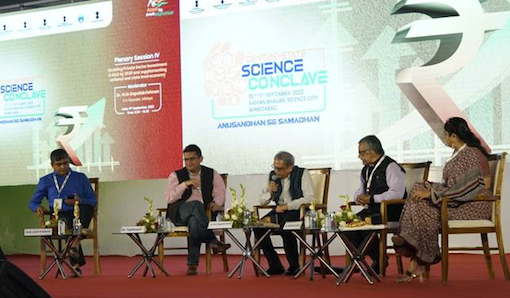Roadmap to augment financial resources for R&D in India
September 12, 2022 | Monday | News
Experimentation is needed with STI governance policies inspired by successful grassroot implementation models: Mugdha Sinha, Principal Secretary (S&T), Government of Rajasthan
image credit- PIB
The roadmap and way forward to augment financial resources for R&D by enhancing the private sectors' Science Technology and Innovation (STI) contribution and developing collaborative funding mechanisms was discussed at the Center-State Science Conclave on September 11, 2022.
“We need to increase investment in research, translational research, and facilitate commercialisation. These can be accelerated through the private sector,” said Dr Kris Gopalakrishnan, Co-founder, Infosys, at the panel on doubling private sector investment in R&D of the Conclave.
He stressed on funding support for knowledge creation, dissemination and application and highlighted the role of structures, co-location of industry and academia, as well as incentives like tax breaks. “At least 1% of CSR from the industry should be spent on solving present problems like drinking water, cancer, anti-microbial resistance and also on open-ended future problems.
Dr Akhilesh Gupta, Senior Adviser, Department of Science and Technology (DST), highlighted the need for innovation in MSMEs, increasing the scope of models like Biotechnology Industry Research Assistance Council (BIRAC), Technology Development Board (TDB), cluster model involving co-location of industry and academia, as well as steps like bringing back industry products funded by government to the government to promote the involvement of private sector in research.
Dr Taslimarif Saiyed, Chief Executive Officer of C-CAMP, Bengaluru, underlined the necessity for mid-stage funding for startups and collaborations with Venture Capitals (VC) and industry. “Models, where VCs & industry can partner with government including state governments to take early fruition to scale, should be incentivised,” he added.










